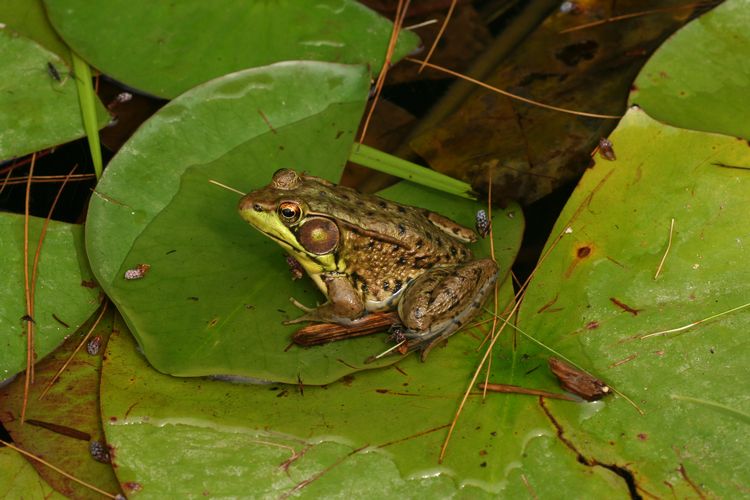Take cues from nature to bring wildlife to your lake’s shoreline
Create habitat along shorelines to support healthy lake ecosystems.

Michigan has some of the most stunning inland lakes the United States has to offer, attracting those who seek tranquility, stunning views and countless recreational opportunities that include boating, kayaking, swimming and fishing. Michigan State University Extension recognizes lakes also support an abundance of wildlife that not only help enhance lake health, but also give us one more reason to treasure them.
Wildlife depend on natural shorelines to provide critical habitat
The shoreline is one of the key components of a lake responsible for sustaining wildlife. Shorelines serve as a natural transition zones between land and water, providing critical access and habitat for lake life. For example, fish breed and find food necessary for survival and growth in this area. This is also where many animals who live on land interact with lakes. There is no doubt that the diversity, health and stability of this transition zone is essential to the animals that live in the area.
Native plants help maintain healthy lakes while attracting beautiful and beneficial insects
Native shoreline plants grow in, along and just outside of the water, and are adapted to local conditions. They support beneficial insects, including natural enemies that help control pest populations. They also support native pollinators like Monarchs. Trees, shrubs and other native plants hold the shoreline in place with their deep roots and guard the land from waves produced by wind and boats with their stems. The vegetation also acts as a buffer, capturing nutrients and runoff from the land above the lakeshore.
Natural shorelines make waterfowl think twice before choosing to stop
The Michigan Department of Natural Resources (DNR) has noted Canada geese love lawns that go right to the water’s edge so they can safely graze and rear their young. Maintaining taller vegetation at the shoreline discourages geese and other waterfowl because it prevents them from seeing predators. According to Joe Nohner, DNR Inland Lakes Habitat Analyst and Coordinator for the Midwest Glacial Lakes Partnership, “A natural shoreline helps to address the goose problem which also helps to address nutrient run-off issues and provide habitat for fish, frogs, birds and other species.”
Does your shoreline pass the reptile and amphibian test?

Shorelines with grass to the water’s edge or with a seawall do not fully support fish and wildlife due to habitat removal and destruction. One reptile, the Blanding’s turtle, depends on natural shorelines. They move between water and land during different parts of their lifecycle. Seawalls can prevent the Blanding’s, as well as other turtles, from accessing the land to lay eggs.

Amphibians such as frogs and toads require natural shoreline habitat as well. They live on land, but are tied to the water for reproduction. Green frogs simply cannot survive without shoreline plants. Frogs and toads are also important predators, consuming thousands of insects. In turn, frogs and toads are eaten by other animals including fish, birds, mammals and reptiles.
Steps you can take to support wildlife along your shoreline
Do you want to bring more wildlife to your waterfront? Plant it, and they will come. Here are some things to consider:
- Identify barriers to wildlife. Seawalls and rock riprap create vertical or semi-vertical barriers and disrupt the natural transition between the water and land. Many animals need to be able to move back and forth to feed, rest and nest. If a tree falls into the lake, consider keeping it there to provide excellent fish and wildlife habitat. Or, consider adding an access structure ramp or platform steps to your shoreline. You can also add plants in front of a seawall and directly into riprap.
- Rethink landscaping with habitat in mind. Replace some shoreline lawn with native plants that provide food and protection. Instead of removing aquatic plants from the lake, preserve as many as possible to protect your lake’s health. If you desire to see Monarch butterflies at your lakefront, include milkweed in your plant palette to support its caterpillar stage. If you are worried about creating a “wild” shoreline, note that native plants also thrive in more well-ordered gardens.
For more information on how to support wildlife along inland lakes, visit:
- Michigan State University Extension “Smart Gardening for Shorelands”
- Michigan Natural Shoreline Partnership
- Midwest Glacial Lakes Partnership “Shoreline Living”
A version of this article originally appeared in the June issue of the Lakefront Lifestyles Magazine.



 Print
Print Email
Email




